The Essential Structure Of Romantic Comedies
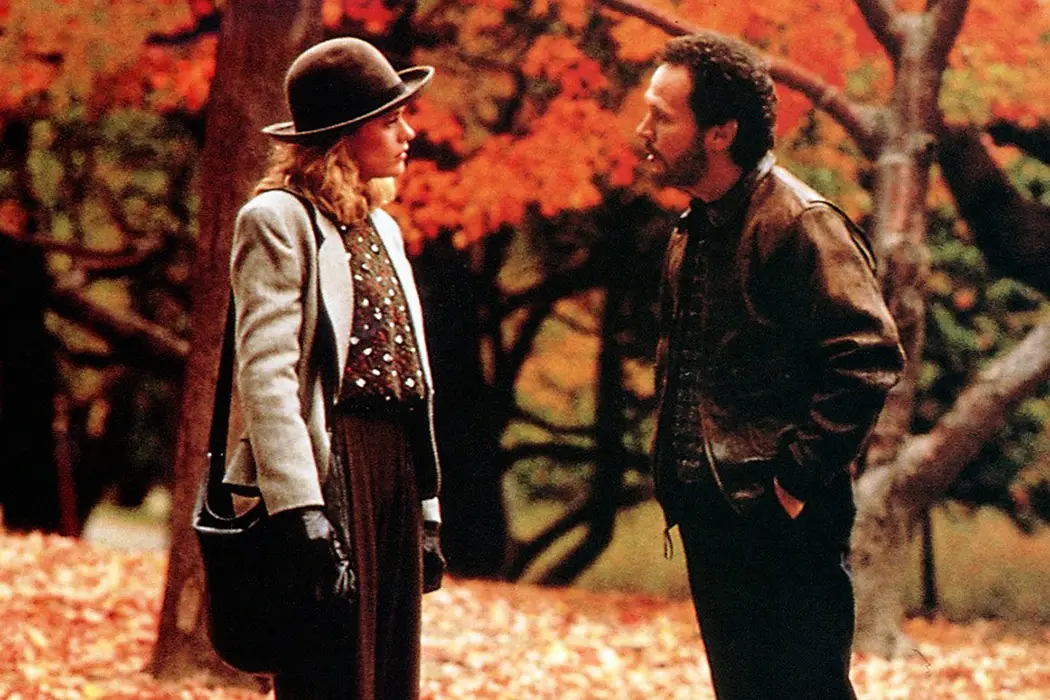
Successful romantic comedies all follow the same narrative structure. Such plot points allow films to capture the audience’s emotions and play around with them despite being such a predictable genre. Here is an analysis of each plot point and the general structure, in three different romantic comedies: When Harry Met Sally (1989), Notting Hill (1999), and Life as we Know it (2010).
1. Unfulfilled Desire
As all great romantic comedies begin, the protagonists are missing something important in their lives, whether it be love or happiness, etc., evidently foreshadowing what is to come.
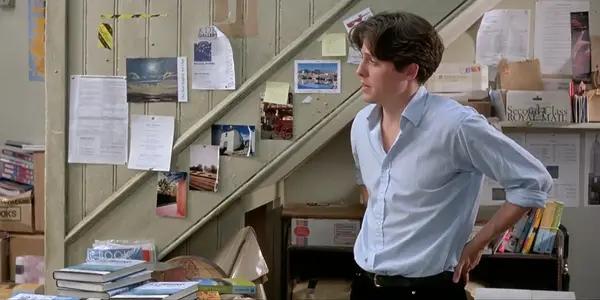
The beginning of Notting Hill consists of a montage of famous actress, Anna Scott. Her famous life is depicted, yet lyrics heard say “no one is allowed to see her when she cries,” thereby implying that while she is famous, she is not genuinely happy and the world is oblivious to this, thereby depicting her unfulfilled desire: happiness and privacy. The film then follows with a narration from William Thacker, describing his small-town life, running his travel bookshop. He picks out his friends in stock footage and the audience sees that while he is ultimately happy, he lacks romance and love in his life, as his wife had left him earlier. With this comes his unfulfilled desire.
In Life As We Know It, Holly Berenson is an avid baker who is good at her practice. Her unfulfilled desire, however, stems from the lack of relationships she has had. The film begins with Holly getting ready for a date, and the extreme close-ups of her routine indicate that she is very organized and systematic. As the scene progresses, the viewers realize that her somewhat uptight personality very much contrasts that of Eric Messer, the male protagonist who is laid back and carefree. While he seems to be happy with his happy-go-lucky life, his unfulfilled desire is portrayed through his casual relationships with women, implying he has no genuine romance in his life.
In the film When Harry Met Sally, Sally Albright’s unfulfilled desire is revealed when she claims she wants to leave Chicago to go to New York and become a journalist. She claims that “nothing has happened” to her in her life and she feels that moving may be the solution. Harry Burns’s unfulfilled desire is similar to that of Eric’s, where he seems to be lacking genuine love from others in his life.
2. Meet Cute
The meet-cute is an iconic scene for romantic comedies. Here, the two protagonists meet and their personalities instantly clash, thereby contributing to the comedic aspect of the genre. This clashing of personalities, however, foreshadows a change in each character as the audience is aware they will eventually become love interests.
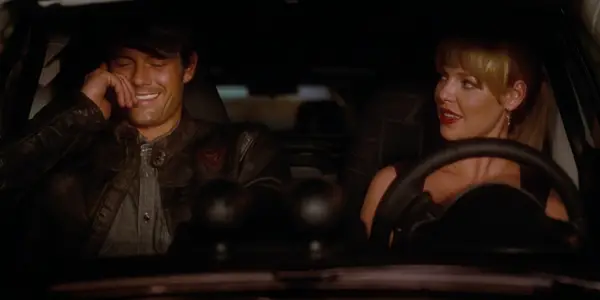
The meet-cute in Life As We Know It begins with Holly waiting at her house. When Eric arrives an hour late and as the two get ready to leave, he hands her a helmet with the intent of having her ride on the back of his motorcycle. Immediately, Holly refuses and asks to take her car instead. It is evident the date is going downhill. The medium shot of Eric and Holly in the car gives the audience a sense of intimacy or lack thereof as the two maintain a certain distance between them. This is ironic, as Holly’s smart car, being small in nature, forces the two to maintain close proximity.
Nevertheless, the clashing personalities bring the two to maintain a constant space between them. This distance or divide is further emphasized when Eric receives a “booty” call from a girl and he asks to meet earlier that night, indicating that he would rather see the person on the phone than continue his date with Holly. Holly becomes angry and storms out of the car. Thus, the meet-cute effectively characterizes the relationship as one that is volatile and very much incompatible. This is further emphasized through a montage of shots at their best friends’ wedding wherein it is evident that Eric continues to harass Holly. With this, the audience is very much aware of their toxic relationship, thereby contributing to the comedy aspect of the film.
In When Harry Met Sally, the meet-cute is very much like that of Life As We Know It, where the two have contrasting personalities. Harry is characterized as a laid-back man as seen through a medium shot of him nonchalantly engaged in a make-out session with his girlfriend Amanda. Sally, on the other hand, being a somewhat uptight woman, has no tolerance for this and honks her horn repeatedly as the two are meant to travel to New York together. The emphasis of the diegetic sound of the horn strengthens Sally’s uptight character. In the car ride, the two are seen in a medium shot with a distinct, constant space between them, thereby portraying the lack of intimacy during this time. They argue about different topics and they ultimately determine that they cannot be friends as Harry claims, “men and women can’t be friends because the sex part always gets in the way.” In New York, the two part ways and as the camera tracks further away, the audience can hear Louis Armstrong’s “Let’s Call the Whole Thing Off,” thereby emphasizing their obvious differences.
In Notting Hill, the two meet in William’s travel bookshop. As William seems evidently confused as to why she is there, she acts cool and collected, greatly contrasting William’s awkward personality. A comedic element is brought into this scene, as a thief stealing a book is caught rather anticlimactically and ironically, something popular in British humor. Outside, William decides to get some orange juice, and on the way back, his clumsy self runs into Anna and spills the entire drink all over her. He immediately takes her back to his place where she gets herself cleaned up. Their contrasting personalities are emphasized in a series of medium shots of the two having a conversation, where William tries to offer her various options of food and drink. Anna, still as calm and collected as before, insists that she must leave. Before Anna leaves, she kisses William rather abruptly and exits his house. William is left dazed, as he is still in shock of meeting her. She calls his house a few days later asking for him to come by her hotel and he does.
3. Happy Together
As the two characters spend more time with each other, the “honeymoon stage” kicks in, not necessarily connoting to a romantic relationship, rather, an effective one that complements the current situations the two are in. Technical elements consist of romantic music and montages.
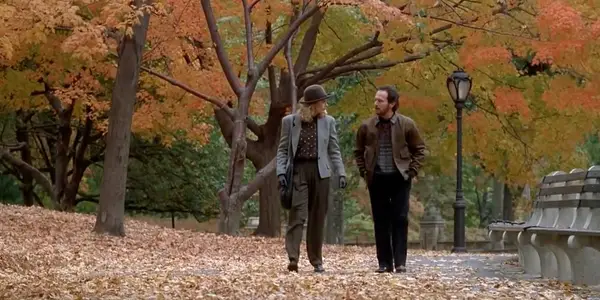
The “Happy Together” in When Harry Met Sally takes up a big chunk of the movie, as the two live their separate lives. They meet again once in awhile but the reunion always turns sour, as Harry’s charming ways get the best of him, thereby rubbing Sally in the wrong way. After a considerable amount of time, the two become friends, as indicated through a line in a movie the two watch, “This is the beginning of a beautiful friendship.” The film conforms to the “Happy Together” narrative conventions as it makes use of a montage of the two spending time together voiced over by their calls to each other about their daily lives.
In the case of Life as We Know It, Eric and Holly learn to balance their daily lives while at the same time raising Sophie. It is evident that Holly’s OCD and organization are a key role in assuring the success of their plan. A montage of the two spending time with Sophie while balancing their lives indicates this “happy together” phase.
In Notting Hill, William takes Anna to his sister’s birthday and the two have a grand time. This marks the beginning of their romantic relationship, as they sneak away to spend time together. The film then follows with a montage of Anna and William on dates, partaking in different activities. The montage portrays the passage of time; thus it is evident that the two are spending a lot of time being happy together.
4. Obstacles Arise
In this narrative plot point, the original lives of the characters eventually catch up to them, causing a stir in the relationship.
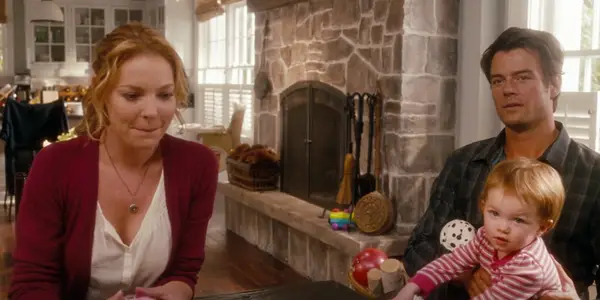
In Life As We Know It, the two sleep together, something the social worker helping them highly discourages. Seeing as the two are putting their personal lives in the way of raising Sophie, things may get ugly. As the two are confronted by the social worker in a medium shot, we can see the minimal physical space between them slowly grow as they realize what they have done.
For When Harry Met Sally, we can assume that the first obstacle that stirs their relationship is their kiss at a New Year’s party. As the two try to avoid looking lonesome on the dancefloor at midnight, they leave the room seconds before midnight. However, they feel the need to conform to the New Year’s tradition, thereby giving each other a little peck. A medium shot, quite long in duration, allows the audience to see their transition in emotions as they first feel fine, smiling and enjoying the night. Their smiles, however, fade from their faces as the two realize their possible feelings for each other.
In Notting Hill, the obstacles arise when Anna’s boyfriend comes to surprise her. Immediately, their romantic relationship is interrupted as the two must act as normal as possible, with William even pretending to be a hotel room service waiter. In terms of technical elements, the film uses quick cuts to emphasize the intense mood as well as contrast the emotions brought about in the previous narrative point, as the shots were much longer than they are now, connoting a fairytale-like mood. Things quickly become awkward between Anna and William, and she leaves London almost immediately without seeing William again.
5. The Journey
The characters begin to face the obstacles and find solutions in “The Journey.”
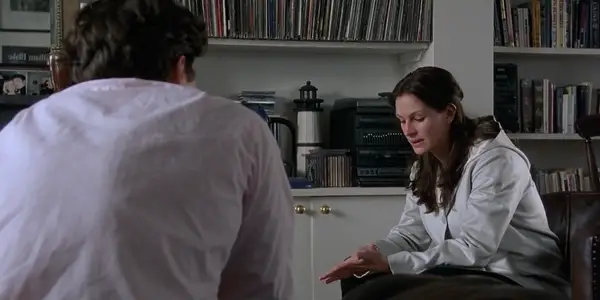
In Notting Hill, following the incident with Anna and her boyfriend, William tries to date again. He is set up on a blind date, multiple actually, and ends up finding someone cool. He tries to get his life back on track. Despite all this happening, we see no footage of Anna, however, and we assume she goes back to her regular life in the U.S. After some considerable time, Anna comes back to William’s house looking very upset. She reveals that an old video of her at a nude photo shoot has been released, and she thought of nowhere else to go but William’s house where she knows she is safe. She also tells William that she broke up with her boyfriend, and the audience sees the two try to mend their relationship, thus portraying “the Journey” they face as they try to overcome the initial obstacle.
In Life As We Know It, the two decide to see other people, but they never forget their love for each other. Life goes on normally. They go back to balancing Sophie amongst each other and their daily lives.
In When Harry Met Sally, the two try to go back to being “just friends” but it is evident that is not the case. Their friendship then shifts from a casual one to a more intimate one, as Harry and Sally become more concerned about each other and their lives. They both begin to date other people and they both question the other’s significant others’ “fit” for them. For example, Sally openly claims that she thinks Harry’s new girlfriend is too young, and Harry does not like Sally’s new boyfriend. Thus, their friendship has definitely changed.
6. New Obstacles
Despite the seemingly effective solutions, the characters continue to face more hardship within their relationship.
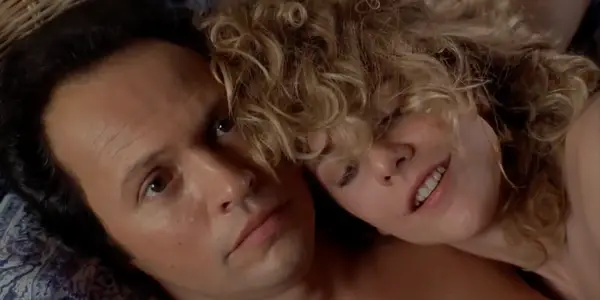
In When Harry Met Sally, another obstacle comes about and it really rocks their friendship. Sally finds out that her first love Joe is getting married and she is an emotional wreck. Harry decides to come over to help her feel better but the night results in the two sleeping with each other. Their facial expressions reveal their realization the next day. This event ultimately ruins their friendship the next morning as they both try to act as nonchalant as possible. Through the use of split screen, the film shows the two calling their best friends. As their friends encourage them, they cannot help but feel strange, as their relationship remained very platonic for a long time.
For Holly and Eric in Life As We Know It, raising Sophie becomes harder than expected, and Eric is offered a new job in Arizona. He claims he wants to move the family there, but Holly refuses, as she wants to keep her friends’ wishes of keeping Sophie at home.
In Notting Hill, paparazzi get in the way, publications and media once more. They ultimately decide to call it quits once and for all. Jump cuts characterize an intense mood as Anna confronts William, becoming angry with him for not understanding how difficult her fame is to deal with.
7. The Choice
Such hardships drive the characters to make a choice, whether or not they want to continue being in a relationship.
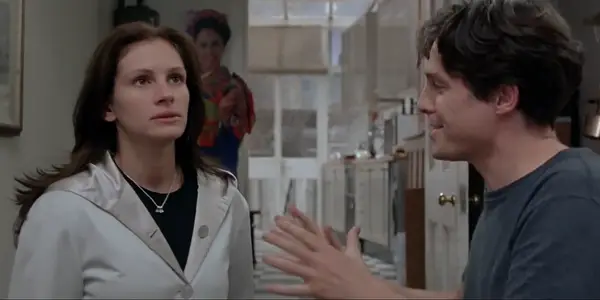
In Notting Hill, they ultimately decide to call it quits, Anna leaves for the second time and William is once again left forlorn.
In Life As We Know It, Eric decides to leave and Holly takes things into her own hands; she sells the house and decides to hold off on her dreams of being a caterer/cafe owner.
In When Harry Met Sally, they admit sleeping together was a mistake, they go back to being friends. Their friendship is a little awkward, they stop talking to each other regularly. They live their separate lives. They ultimately decide to stop seeing each other.
8. Crises
After the choice is made, the characters face the consequences of their actions.
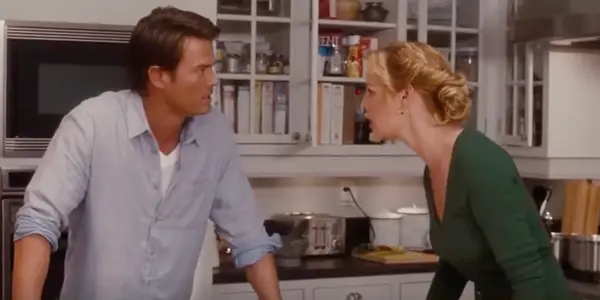
In Life As We Know It, Holly struggles with Sophie and Eric is left lonely. The two ultimately face hardship without each other. They fight about Holly selling the house and it results in an ugly end to what was meant to be a wonderful neighborhood Thanksgiving dinner.
In When Harry Met Sally, the friendship ultimately fails and both are left lonely and depressed.
In Notting Hill, William and Anna are left to their separate lives once again. She visits him one day and asks for forgiveness but he ultimately refuses to take part in her life again, leaving them both miserable and alone.
9. Epiphany
The consequences faced bring the protagonists to experience an epiphany, usually resulting in the two characters professing their love for one another. Technical elements usually involve parallel editing to build suspense.
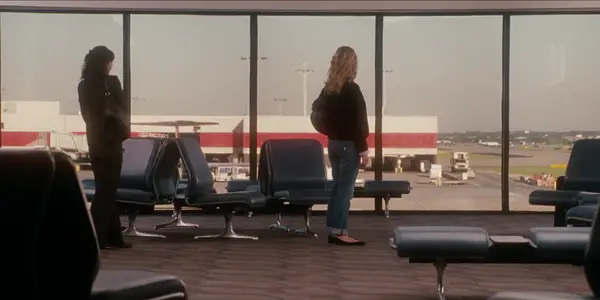
In Life As We Know It, Holly realizes she loves Eric and chases him at the airport. Parallel editing is used to build suspense as she tries to stop him from getting on his flight. She fails and heads home. To her surprise, Eric is there, and he confesses his love for her and his determination to stay with her and Sophie.
In When Harry Met Sally, New Year’s Eve: Sally is at a party, Harry is alone walking around the city. Parallel editing shows that they are miserable. Harry has a flashback to what he says about men and women not being friends and a montage of their friendship flashes on screen with his words voicing over. Suddenly, music plays “It had to be you,” thus implying he loves Sally. He runs to her at the party. Parallel editing is now used to build suspense, as Sally is about to leave the party and Harry is trying to get to her. He catches her as she’s leaving and he professes his love for her.
In Notting Hill, William goes over his decision to turn Anna down with his friends. His monologue as he goes over his thoughts makes him realize he made the wrong decision, and they race to her in a car in a dramatic, speedy montage. Quick cuts create a suspenseful pace as they try to get to her in time, as it is her last day of being in London. He confesses his love for Anna, asking her to take him back, and she says yes.
10. Resolution
As many romantic comedies end with a resolution, the endings are usually very positive, as the characters are able to fulfil their “unfulfilled desires” from the beginning of the film. This leaves the viewers content despite the obvious predictability of films within this genre.
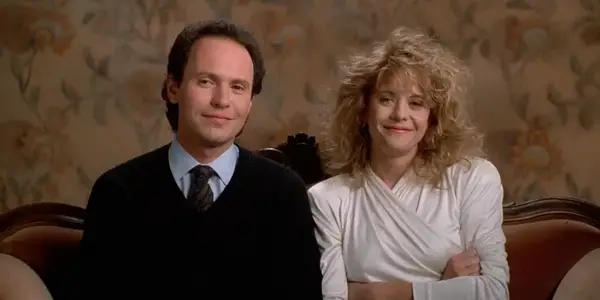
In When Harry Met Sally, the film ends with the two being interviewed as a happy couple. They talk about their marriage.
In Life As We Know It, Holly and Eric end up surviving another year together, as happy as can be.
In Notting Hill, the film ends with the two getting married, followed by a montage of their lives together. They dabble in their regular activities in London, but William also gets a taste of the celebrity life as Anna takes him to a special premiere.
There you have it: the essential structure many romantic comedies follow. Do you think this structure plays a key role in portraying the themes of romantic comedies? Why or not? Tell us in the comments below!
Does content like this matter to you?
Become a Member and support film journalism. Unlock access to all of Film Inquiry`s great articles. Join a community of like-minded readers who are passionate about cinema - get access to our private members Network, give back to independent filmmakers, and more.













